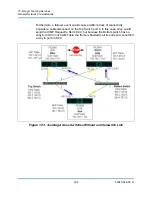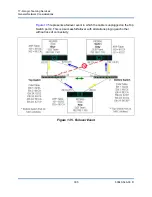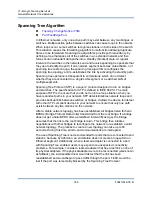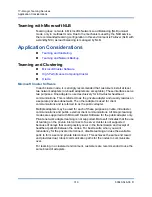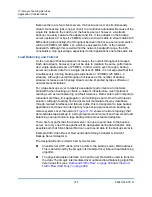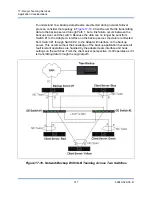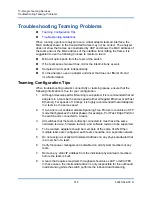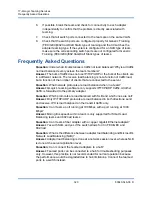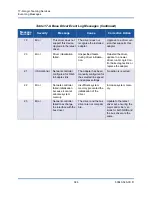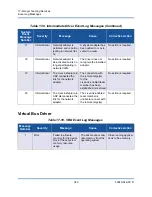
17–QLogic Teaming Services
Application Considerations
316
83840-546-00 D
The teamed interface on the backup server transmits a gratuitous address
resolution protocol (G-ARP) to Client-Server Red, which in turn, causes the client
server ARP cache to get updated with the Backup Server MAC address. The load
balancing mechanism within the teamed interface determines the MAC address
embedded in the G-ARP. The selected MAC address is essentially the destination
for data transfer from the client server.On Client-Server Red, the SLB teaming
algorithm will determine which of the two adapter interfaces will be used to
transmit data. In this example, data from Client Server Red is received on the
backup server Adapter A interface. To demonstrate the SLB mechanisms when
additional load is placed on the teamed interface, consider the scenario when the
backup server initiates a second backup operation: one to Client-Server Red, and
one to Client-Server Blue. The route that Client-Server Blue uses to send data to
the backup server is dependant on its ARP cache, which points to the backup
server MAC address. Because Adapter A of the backup server is already under
load from its backup operation with Client-Sever Red, the Backup Server invokes
its SLB algorithm to
inform
Client-Server Blue (through an G-ARP) to update its
ARP cache to reflect the backup server Adapter B MAC address. When
Client-Server Blue needs to transmit data, it uses either one of its adapter
interfaces, which is determined by its own SLB algorithm. What is important is that
data from Client-Server Blue is received by the Backup Server Adapter B
interface, and not by its Adapter A interface. This is important because with both
backup streams running simultaneously, the backup server must
load balance
data streams from different clients. With both backup streams running, each
adapter interface on the backup server is processing an equal load, thus
load-balancing data across both adapter interfaces.
The same algorithm applies if a third and fourth backup operation is initiated from
the backup server. The teamed interface on the backup server transmits a unicast
G-ARP to backup clients to inform them to update their ARP cache. Each client
then transmits backup data along a route to the target MAC address on the
backup server.
Fault Tolerance
If a network link fails during tape backup operations, all traffic between the backup
server and client stops and backup jobs fail. If, however, the network topology was
configured for both QLogic SLB and switch fault tolerance, then this would allow
tape backup operations to continue without interruption during the link failure. All
failover processes within the network are transparent to tape backup software
applications.
Summary of Contents for 8400 Series
Page 390: ......


